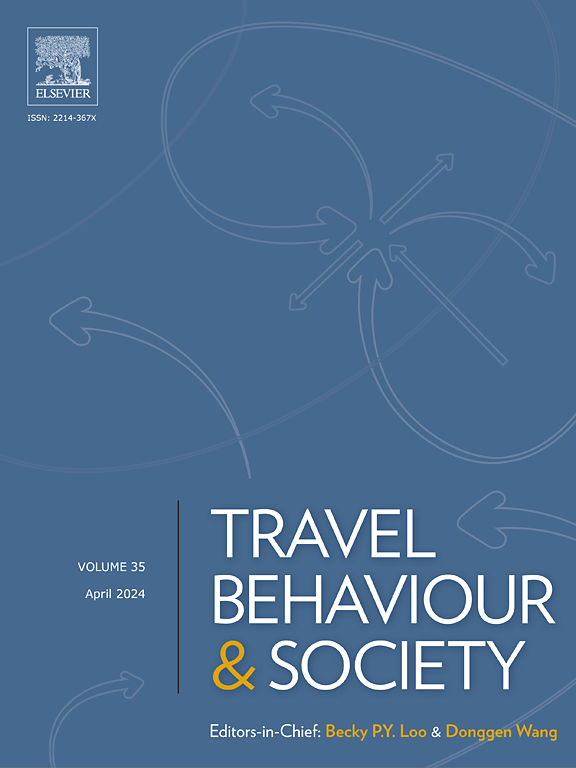我住在哪里就是我做什么——居住选择的潜力决定了挪威搬家者的能源使用和旅行行为
IF 5.7
2区 工程技术
Q1 TRANSPORTATION
引用次数: 0
摘要
出行行为和能源使用与居住地密切相关,因此也与居住地选择密切相关。然而,在住宅选择研究中,关于住房和地点选择如何在很长一段时间内影响出行需求和能源决策的证据仍然有限。我们调查了挪威的购房者,以分析他们的居住偏好和旧居在多大程度上影响了与能源和旅行需求相关的未来居住特征的选择。这些特征包括住宅类型和大小、能源标准、停车场和公共交通以及靠近市中心。我们的研究结果表明,搬家者选择符合他们对能源和旅行相关属性的偏好的住宅。然而,故居的特征也解释了新选择的特征,表明对损失的厌恶或对以前经历的偏好的偏见。此外,住宅类型的选择限制了随后的选择选项,特别是关于建筑面积和中心距离。此外,高收入与住宅大小和停车通道方面的可持续选择有关。一般来说,这些特点为减少能源和靠近市中心的旅行需求提供了共同的好处。更小的住宅、更少的独立住宅和更多的公共交通站点预计将降低出行需求和能源消耗。然而,这些好处伴随着能源标准的权衡,在市中心以外的地方往往更好。本文章由计算机程序翻译,如有差异,请以英文原文为准。
Where I live is what I do – The potential of residential choices to determine energy use and travel behaviour of Norwegian movers
Travel behaviour and energy use are strongly linked to the residence and thus to residential choice. However, in residential choice research, there is still limited evidence on how housing and location choice impact both mobility needs and energy decisions over a long time.
We surveyed Norwegian homebuyers to analyse the extent to which their residential preferences and former home influence the choice of future residence characteristics related to energy and travel demand. These characteristics include dwelling type and size, energy standard, access to parking and public transport as well as proximity to the city centre.
Our findings indicate that movers select residences that match their preferences for energy- and travel-related attributes. However, the characteristics of the former home also explain the newly chosen characteristics, suggesting loss aversion or a bias of preferences towards the previously experienced. Additionally, the choice of dwelling type constrains subsequent choice options, particularly regarding floor area and centre proximity. Furthermore, high income is associated with less sustainable choices regarding dwelling size and parking access. Generally, characteristics offer co-benefits for reduced energy and travel demand in proximity to the city centre. Smaller dwellings, fewer detached houses and more public transport stops are expected to lead to lower travel demand and energy use. However, these benefits come with trade-offs in energy standard, which tends to be better outside the city centre.
求助全文
通过发布文献求助,成功后即可免费获取论文全文。
去求助
来源期刊

Travel Behaviour and Society
TRANSPORTATION-
CiteScore
9.80
自引率
7.70%
发文量
109
期刊介绍:
Travel Behaviour and Society is an interdisciplinary journal publishing high-quality original papers which report leading edge research in theories, methodologies and applications concerning transportation issues and challenges which involve the social and spatial dimensions. In particular, it provides a discussion forum for major research in travel behaviour, transportation infrastructure, transportation and environmental issues, mobility and social sustainability, transportation geographic information systems (TGIS), transportation and quality of life, transportation data collection and analysis, etc.
 求助内容:
求助内容: 应助结果提醒方式:
应助结果提醒方式:


